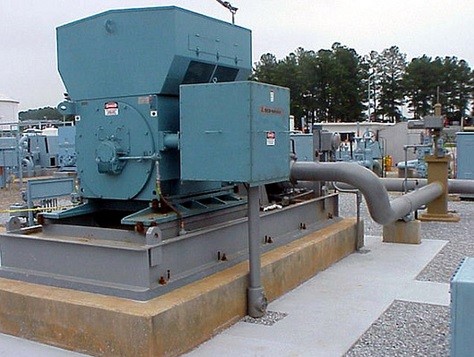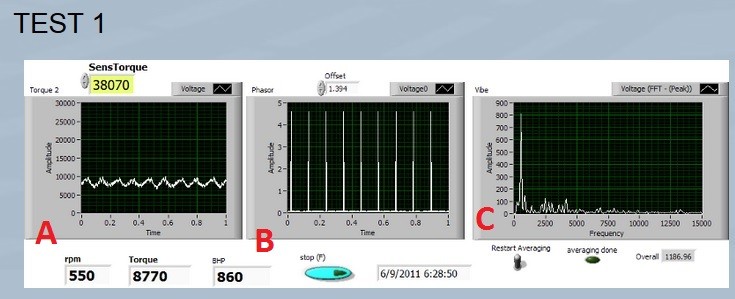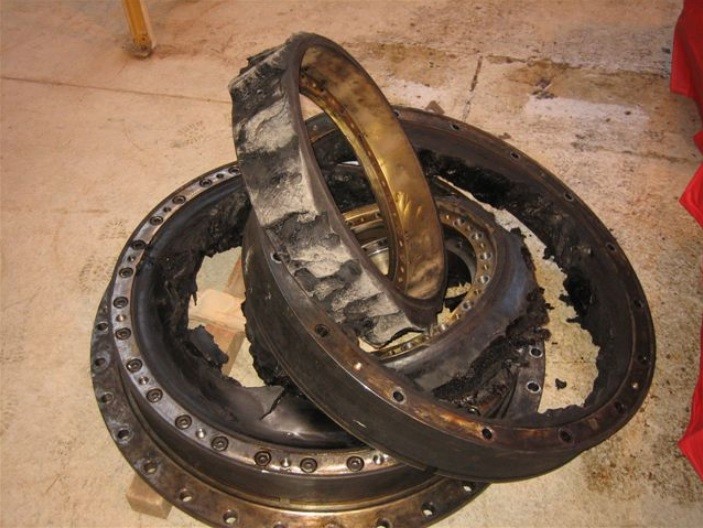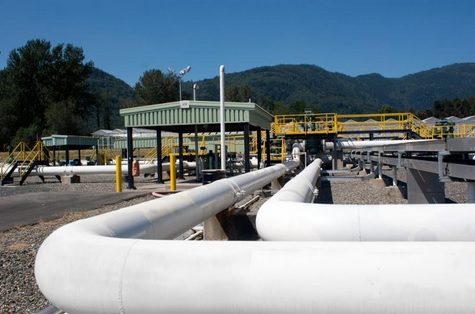At a crude oil pumping station (consisting of 10 units with 4500 HP/ unit), a problem arose where the elastomeric couplings melted during regular operations as seen in this photo.
Suspecting torsional vibration as the cause of failure, Mr. Gilberto Rios of DYNA company installed the TorqueTrak 10K telemetry instrument and a Micro-Measurements strain gage to measure the true dynamic torque during operation. Shown below are the data. a. Torque. b. Shaft Speed. c. Torsional Vibration Spectrum:
in TEST 6 at 984 RPM, the torque increased dramatically, and showed great oscillation. In the test, the speed was reduced quickly to avoid irreparable damage to the elastomeric couplings.
ANALYSIS & CONCLUSION
The heat produced by vibratory torque resulted in great oscillation which led to such a temperature increase the rubber element of the bearing started to melt. The most likely cause of the failure is due to the interaction between torsional vibration and the operation of the governor. At high loads and speed, the governor can lose stability and excite oscillations.
However, interaction between the governor system and low-frequency torsional vibrations can cause damage to the elastic coupling and/or driven machine. Because improving the performance of the governor at these low loads proved to be very difficult, the solution would be to install an oversized coupling that could deal with the vibratory torque level without exceeding the allowable heat production in the rubber element.
Due to the high cost of this solution, it was decided to limit the engine’s velocity to a maximum of 970 rpm since a speed over this limit will produce very severe torsional oscillation. The units at this oil pumping station have been working for the last months using this set max velocity with acceptable results.
This case study was provided by:
Mr. Gilberto Rios
DYNA Tv 33 136-53
In 24 Bogota 01100, Colombia
Vibration consultant
Around 20 years in petroleum companies in Colombia, USA, Middle East.





